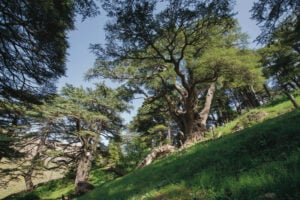Amid a warming climate, scientists have uncovered some good news: Earth’s tropical forests can handle the heat and can continue to store carbon up to a certain point. In other words, these carbon-hoarding tropical forests can continue to be a natural weapon in combating climate change.
However, this comes with a warning: this can only be done if global greenhouse gas emissions are limited, and if temperatures remain under a certain threshold.
For years, scientists have worked to understand how the planet responds and adapts to a warming climate, and one of their major areas of focus has been how forests absorb and store atmospheric carbon dioxide. Many have looked at tropical forests in particular, as they hold 40 per cent of all the carbon stored by vegetation.
But, concerns have been expressed about rising temperatures disrupting a tree’s ability to store this carbon in these environments.
These concerns prompted an international team of more than 200 scientists to explore the long-term resilience of tropical forests to rising temperatures, by measuring how much carbon trees can store. The recent study, published in the journal Science, is the first to analyze long-term climate sensitivity based on direct observation of whole forests across the tropics.
“Up to a point, this is a good news story,” says Sean Thomas, a professor at the University of Toronto and one of the paper’s authors. “Tropical forests, due to their high diversity, are able to compensate and be resilient to moderate temperature increases.”
The scientists compiled data from about 600 forest plots throughout Amazonia, South America, Australia, Africa, and Southeast Asia. Some plots date back to the 1950s, but most of the study’s data have been compiled since the 1990s.
What they found is that trees can withstand temperatures up to 32.3 degrees Celsius and still effectively store carbon. If the increase in global average temperature is kept to two degrees Celsius above pre-industrial temperatures, as outlined in the 2015 U.N. Paris Agreement, there won’t be damaging long-term effects.
However, Thomas warns that if temperature increases are too fast or too extreme, then there is trouble. Beyond the 32.3 degrees Celsius threshold, trees’ leaves will begin shutting down and start to die, thus releasing their stored carbon back into the atmosphere.






